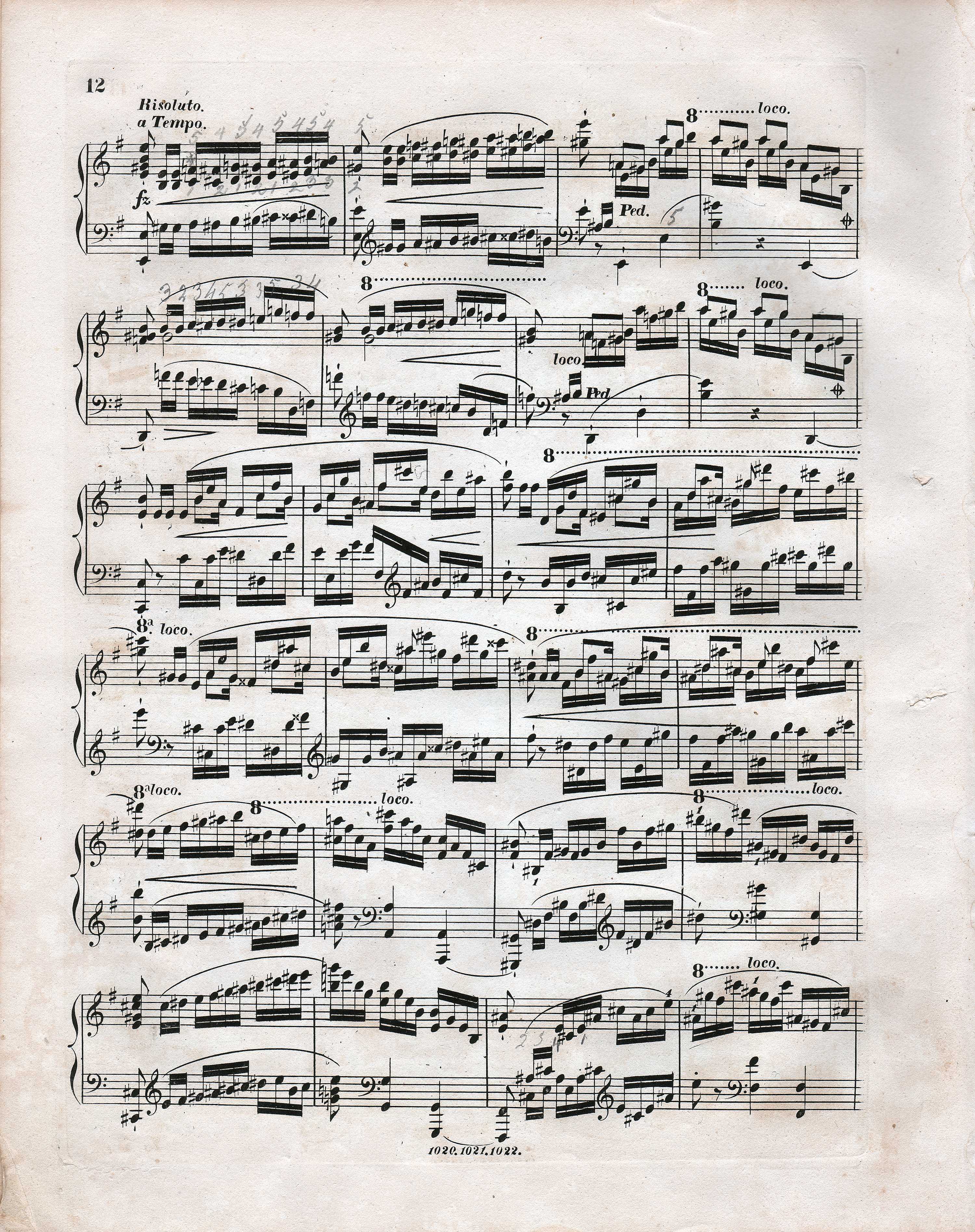



According to us, the articulation markings, i.e. the wedge on the 3rd beat of the bar and the slur, are wrong in the majority of the sources. It is indicated by a comparison with analogous bars 410 and 438, in which it is the bass note on the 2nd beat of the bar that is provided with a staccato mark, whereas the slur encompasses the next two crotchets. The scheme of the accompaniment, in which, after the detached bass note, generally sustained with pedal, the hand moves to the chord position (often broken or repeated) is one of Chopin's favourite procedures. The wedge was crossed out in FEH, in which a fingering was also added; a fingering that confirms the articulation markings we adopted. The entries were probably performed during lessons with Chopin or on the basis thereof.
Compare the passage in the sources »
category imprint: Differences between sources
issues: Annotations in teaching copies, GE revisions, Annotations in FEH
notation: Articulation, Accents, Hairpins



